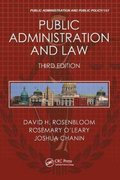Number 7 for this. I dont know if it is positive or negative
#2: Due Sunday, Octo purses/520790/assignments/4651119 3. Gertrude loves eating pretzels with root beer (all brands of root beer). What effect would a rise in the price of pretzels have on her demand for root beer? Why? Again, use words and a graph for the root beer market to demonstrate your answer. 4. Wolverine and Spartan root beer are the best root beers according to the Root Beer Review. There is also the generic store brand root beer - People's Choice brand- that is also sold where Gertrude shops. Suppose that there is a recession. Gertrude's employer cuts her hours and, as a result, her weekly pay declines. What will this do to her demand for generic root beer? Draw a graph of the generic root beer market and explain what happened and why. 5. A manufacturer can produce cars and trucks using similar production technology. Suppose that, ceteris paribus, the price of trucks falls dramatically. How will this affect the production decisions of this manufacturer? Use a graph to show the effect on the car market. 6. In Venezuela the government installed price controls on food purchased in the market in order to make food more affordable for the poor. Draw a graph and explain why this is either a price floor or a price ceiling and what the predicted effect in the market will be. 7. Hip urban coffee shops with wi-fi, comfy couches and spaces to socialize are found to increase productivity and innovation in a wide variety of local industries whether or not their employees actually go to the coffee shops. What type of externality (or spillover) does this create and what policy should be enacted? In words and a graph, explain how resources are misallocated (over- or under-allocated) and the action government should take. Economics in the News 8. Read the following article about helium and draw a graph of the helium market in order to describe first (a) a shortage in the helium market and then (b) the market after the Qatar helium came on the market. Finally on another graph show (c) the effect of the Saudi and UAE dispute on the helium market. Use arrows to indicate the changes and briefly explain what your graph illustrates. How the Qatar Crisis Shook Up the World's Supply of Helium The Atlantic Magazine Helium has two special abilities. It is extremely light, and it can get extremely cold without freezing. Largely for these reasons, the element is needed to use or make all sorts of things: semiconductors, rocket fuel, computer hard drives, the Large Hadron Collider, magnets in MRI machines, airships, scuba tanks, arc welding, anything that needs to be super cold, and of course, balloons. So when helium shortages hit in 2006 to 2007 and 2011 to 2013, the consequences rippled far beyond birthday parties. The Earth is not actually running out of helium, but imbalances in the market, especially around a U.S. government helium reserve, did cause those shortages. Thankfully, relief was on the way. New helium plants came on line in Qatar, and the country quickly went from producing a small sliver of the world's helium to 25 percent of it in 2016. Now, Qatar is at the center of a regional crisis that seems to be about many different things, none of them helium. Yet the helium supply chain is tangled up in it. Qatar usually sends its supply over land through Saudi Arabia to a large port in the United Arab Emirates, from which the helium goes out to Singapore and then factories and labs around the world. Saudi Arabia and the UAE have cut off this route as part of the dispute. It got bad. Because its helium had nowhere to go, Qatar suspended helium production in early June. arch m 75.F Mostly cloudy







